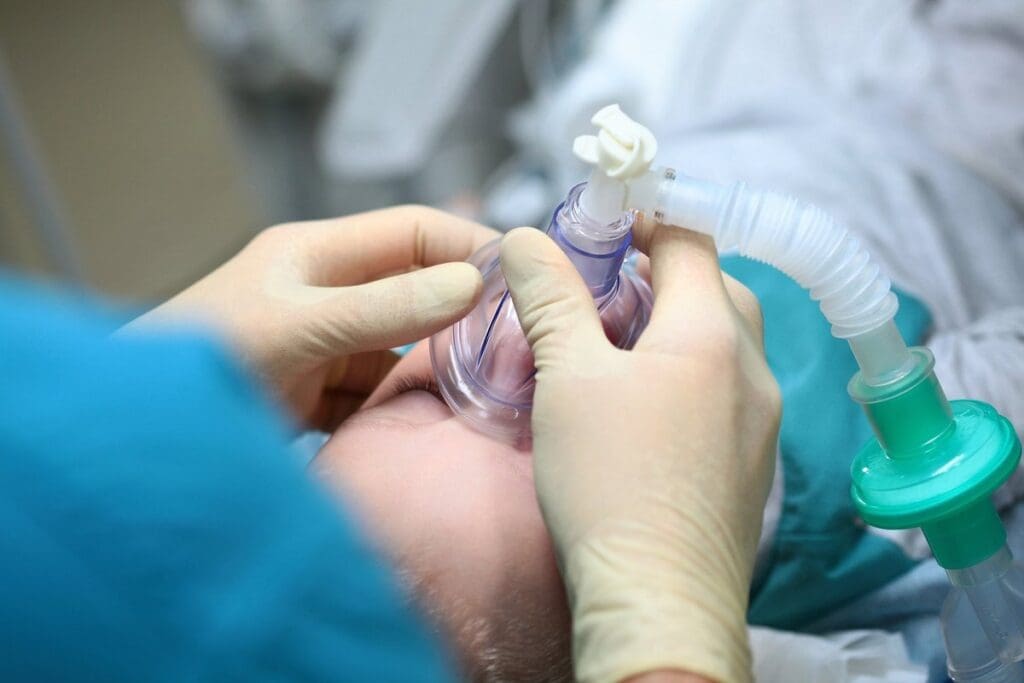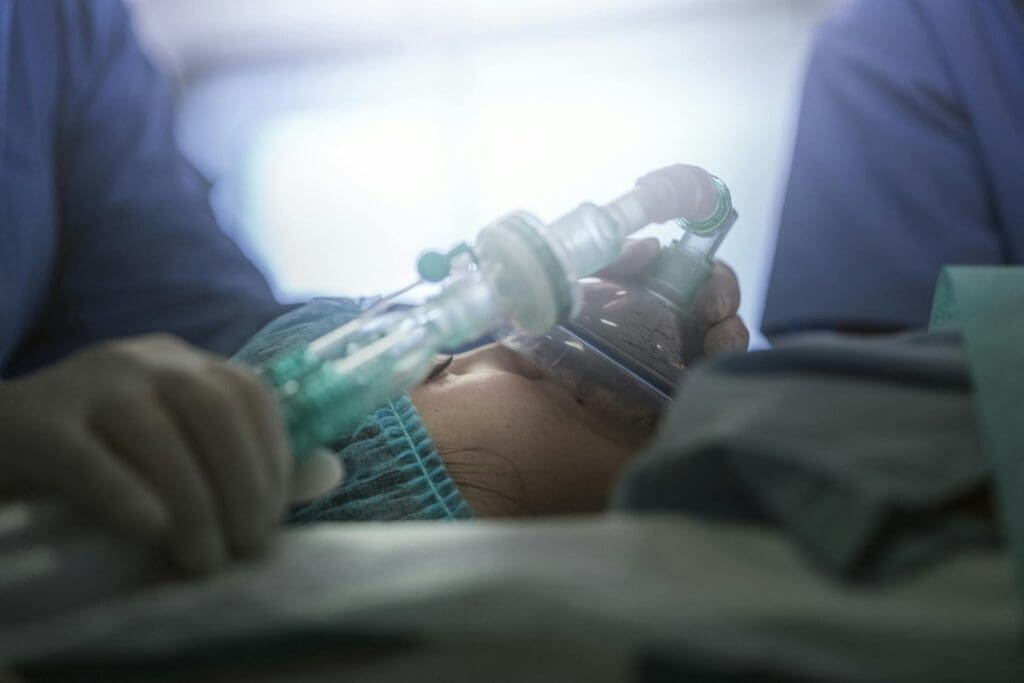Last Updated on November 24, 2025 by
Respiratory problems are a big worry in pediatric anesthesia. Studies show they happen in 23.5%-35.6% of kids who have surgery. The pediatric airway is very different from the adult airway, most so in babies.

As kids get older, these differences lessen. But knowing how the paediatric airway works is key for managing it well. We stress the importance of strict standards and special care to lower these risks.
Managing airways in kids is very different from adults. Kids’ airways have special features that make it harder to manage. These differences make airway care in children more complex.

Kids have bigger heads and necks compared to their body size. They also have larger tongues. These can cause airway blockages.
The larynx is higher up in the neck in kids. The epiglottis is softer and more horizontal than in adults. These differences make it harder to manage airways in children.
Children under anesthesia face more respiratory risks. They use more oxygen and have less lung space. This makes them more likely to lose oxygen.
The biggest risks are in kids under 3. They can face problems like losing oxygen, airway blockage, and spasms right after being taken off the breathing tube. Respiratory Complications: The #1 Problem in Pediatric Anesthesia
Respiratory problems during pediatric anesthesia are a big worry. They happen often and can be very serious. It’s key to know how common they are and their effects.

Recent studies show that 23.5%-35.6% of kids face respiratory issues during anesthesia. This high rate shows we need to watch closely and have good airway plans.
Things that make these problems more likely include:
Respiratory issues in pediatric anesthesia can lead to serious problems, like cardiac arrest. The risk of such severe outcomes highlights the need for careful planning and management to avoid bad outcomes.
We must focus on the most common airway blockages and the details of pediatric intubation. Knowing the differences in airway obstructions between adults and unconscious kids is vital for effective care.
Important facts include:
It’s key to know the different airway problems in kids to manage them well. Airway issues in children can cause a lot of trouble. It’s important to spot and treat these problems quickly.
Oxygen desaturation happens in up to 72.5% of cases. Keeping an eye on oxygen levels is vital during anesthesia in kids. Early detection helps avoid worse problems.
Laryngospasm is a big worry, causing over 50% of airway issues. It needs quick action to avoid serious problems. We must be ready to spot and handle laryngospasm right away.
Upper airway blockage can happen for many reasons, like body shape or foreign objects. Knowing why it happens and how to fix it is key.
Bronchospasm is a big problem for kids with breathing issues. Spotting bronchospasm signs and treating it right is essential for keeping airways open and safe.
Problems like oxygen desaturation, airway blockage, and laryngospasm often happen right after taking out the breathing tube. So, watching closely during this time is very important. We also need to use airway tools wisely. For example, using an oropharyngeal airway carefully and avoiding a too-long nasopharyngeal airway is important.
It’s key to know when pediatric airway issues happen most often. This helps us keep patients safer. We must watch out for specific risks at different times during anesthesia.
The induction phase is very risky for airway problems. Children under 3 years old are at high risk because their airways are small and they need more oxygen.
There’s a big chance of oxygen problems during this time. This is true if mask ventilation is hard or if the child has breathing issues before surgery.
After securing the airway, the maintenance phase has its own challenges. Continuous monitoring is key to spot any airway problems fast.
We must watch for signs of bronchospasm or laryngospasm. These can happen even after the airway is successfully secured.
The post-extubation period is the most risky for airway problems. It’s very important to monitor closely to avoid and quickly fix any airway issues.
Studies show we need to be extra careful in this phase. This is because there’s a big risk of upper airway blockage and other problems.
By knowing these risks and being ready, we can make pediatric anesthesia safer and better for everyone.
The pediatric airway faces many challenges during anesthesia. Knowing the main risk factors is key to keeping anesthesia safe for kids.
Children under 3 face a higher risk of airway problems. Their airways are smaller, and their tongues are bigger compared to their mouths. This makes it easier for their airways to get blocked.
Having a respiratory infection before surgery can raise the risk of airway issues. We need to check the child’s health before anesthesia to lower these risks.
Opioids are used to manage pain during surgery. But, they can cause breathing problems, which is a big concern for young kids. We must use them carefully to avoid this.
The method we use to manage the airway is very important. We need to pick the best way to keep the airway open for each child. This could be through endotracheal intubation or a laryngeal mask airway.
By focusing on these risk factors, we can make anesthesia safer for kids. This helps ensure better surgical outcomes for our young patients.
To keep kids safe during anesthesia, we use the best prevention methods. At LivHospital, we follow the latest research. We do detailed risk checks and tailor care for each child to keep them safe.
Good prevention starts with detailed preoperative assessment protocols. We look at the child’s health history and current status. We also check for any past airway problems.
This helps us spot kids at risk, like those with pre-existing respiratory infections or unusual anatomy.
Knowing the most common airway obstruction in kids is key. In unconscious kids, it’s often the tongue or other mouth parts. Knowing this lets us act early.
Every child’s airway is different, needing individualized airway management approaches. We look at age, size, and health to plan the best care. For example, pediatric intubation needs special skills and tools, and our team is up-to-date.
Also, an oropharyngeal airway should not be used in kids with a working gag reflex. It could cause pain or problems.
Modern monitoring techniques are key in managing kids’ airways. They let us catch any changes fast, so we can act quickly. We use many monitors to watch vital signs and airway status closely.
Having team-based response protocols is vital for handling airway issues in kids. Our teams are ready to act fast and work together in emergencies. We practice often to stay sharp.
By using these prevention strategies, we lower the risk of airway problems in kids. This makes anesthesia safer for them.
Advances in pediatric anesthesia have greatly improved patient safety, focusing on the pediatric airway. It’s key for healthcare providers to understand the special challenges and risks of pediatric airway anatomy. This knowledge helps them give top-notch care.
By recognizing the complexities of pediatric airways and using proven prevention strategies, we can lower complications. Places like LivHospital are dedicated to top healthcare. They focus on tailored airway management and the latest monitoring tools.
Managing pediatric airway issues well needs a deep understanding of risks. This includes age-related risks and infections. Using a team approach and keeping up with new airway management methods helps reduce respiratory problems.
Our goal in advancing pediatric anesthesia safety is to provide care that meets each child’s unique needs. This approach improves outcomes for kids needing anesthesia.
In pediatric anesthesia, the most common airway problem is respiratory issues. These include oxygen desaturation, laryngospasm, upper airway blockage, and bronchospasm.
The pediatric airway is different because of its size. The tongue is bigger compared to the mouth. The larynx is also higher, making it harder to manage.
Children under anesthesia face special challenges. They breathe faster and have less space in their lungs. This increases the risk of breathing problems.
Studies show that respiratory issues in pediatric anesthesia happen in 23.5% to 35.6% of cases.
The main airway problems in kids include oxygen desaturation, laryngospasm, upper airway blockage, and bronchospasm. Oxygen desaturation is the most common.
Airway problems can happen at any time. They can occur during the start, the middle, or after the anesthesia is stopped. The risk is highest after the anesthesia is stopped.
Several factors increase the risk of airway problems in kids. These include being under 3 years old, having a cold, the effects of anesthesia drugs, and how airways are managed.
The narrowest part of a child’s airway is the subglottic area. This is important to consider when managing their airway.
To prevent airway problems, use evidence-based methods. This includes pre-op checks, tailored airway management, modern monitoring, and team responses.
The most common blockage in an unconscious person is the tongue falling back. This can be managed with the right airway techniques.
A too-long nasopharyngeal airway can cause harm to the adenoids or trigger the laryngeal reflex. This might lead to laryngospasm.
Subscribe to our e-newsletter to stay informed about the latest innovations in the world of health and exclusive offers!